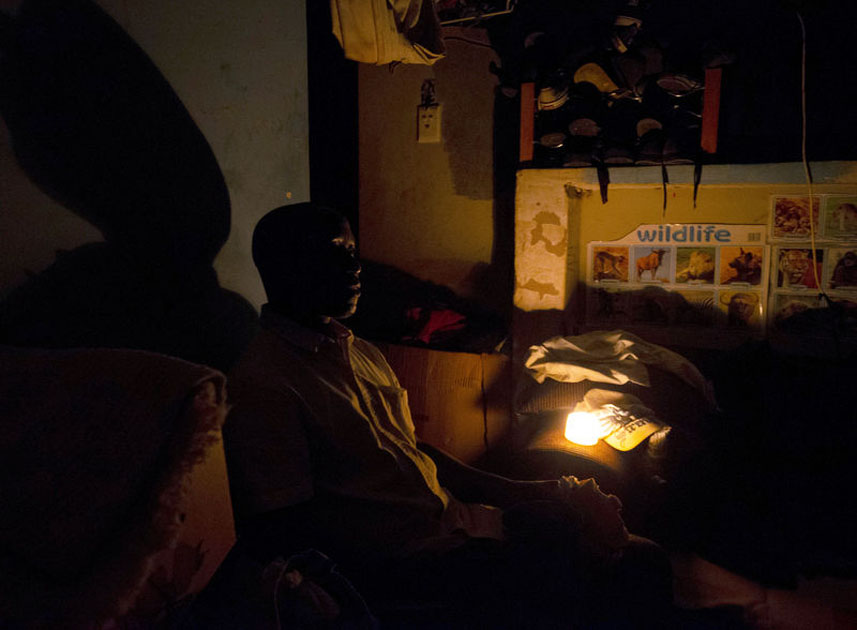
South Africa’s Loadshedding Should End Today
South Africa will experience load shedding (power cuts) for a third day on Friday BUT is unlikely to be affected through the weekend as more generating units return to service, utility Eskom acting chief executive said. Eskom has since Wednesday been forced to impose power cuts for the first time in around seven months, after […]

South Africa will experience load shedding (power cuts) for a third day on Friday BUT is unlikely to be affected through the weekend as more generating units return to service, utility Eskom acting chief executive said.

Eskom has since Wednesday been forced to impose power cuts for the first time in around seven months, after a number of its generating units broke down.
The power cuts show the challenge facing President Cyril Ramaphosa in rescuing the state company, which has been beset by financial and technical problems, and putting further pressure on the economy.
Eskom cut 2,000 megawatts (MW) of power from 9 a.m. until 11 p.m. on Thursday on a rotational basis across the country… in a process known to South Africans as load-shedding.
Eskom Acting Group Chief Executive Jabu Mabuza said the utility will cut 1,000 MW of power from the grid on Friday, and thereafter the utility did not anticipate further power cuts.
“The system remains constrained and vulnerable,” Jabu Mabuza told journalists.
“However, some generating units have already returned to service and we are expecting more units to return to service over the next few days, which lessens the probability of load shedding towards the weekend.”
Mabuza said the decision was necessary to protect the grid from total collapse after unplanned outages.
“Our objective is not to implement load shedding. If we have to as a matter of last resort in order to protect the integrity of the system, we aim to do so at minimal levels, in the shortest duration possible,” he said.
Debilitating power cuts in February and March pushed first-quarter economic growth into contraction and raised the likelihood of South Africa losing an investment-grade rating.
Moody’s is the last of the big three credit rating agencies to have an investment grade rating on South Africa and is due to deliver its latest credit review on Nov. 1.
ENERGY PLAN
The power cuts also affected supplies to Zimbabwe, where Eskom exports up to 400 MW daily, the country’s electricity utility ZESA Holdings said in a notice on Thursday.
Power cuts are a daily occurrence in Zimbabwe but Eskom’s supply problems were compounding the situation.
Eskom produces more than 90% of South Africa’s electricity but has been hobbled by technical faults at its fleet of mainly coal-fired power stations.
It is also grappling with a debt pile which stood at around 440 billion rand ($31 billion) as of March.
Ramaphosa has pledged 59 billion rand of support for Eskom over the next two years, on top of 230 billion rand in bailouts spread over the next 10 years. Officials say its operational losses mean Eskom will also have to take other measures to make it financially sustainable.
Natasha Mazzone, South African shadow minister of public enterprises at official opposition Democratic Alliance, on Thursday said the government’s “mismanagement” of Eskom was to blame for the power cuts.
Integrated Resource Plan
South Africa’s cabinet on Thursday approved the promulgation of the long-delayed plan for electricity generation until 2030.
The Integrated Resource Plan will replace a previous blueprint not updated for almost a decade, and deals with planned electricity generation and energy mix.
“The plan proposes nine interventions to ensure the country responds to the energy needs for the next decade,” said cabinet without elaborating.
The interventions consider energy demand and supply as well as international obligations for South Africa to reduce harmful greenhouse gas emissions, cabinet added. The government will disclose more details at a media briefing on Friday.
(Additional reporting by Olivia Kumwenda-Mtambo in Johannesburg, MacDonald Dzirutwe in Harare; editing by Jason Neely and Susan Fenton)
